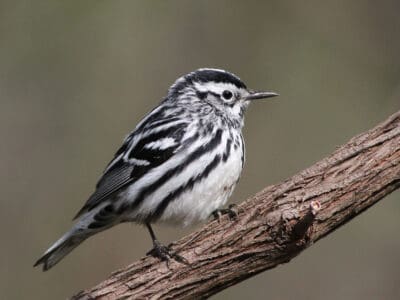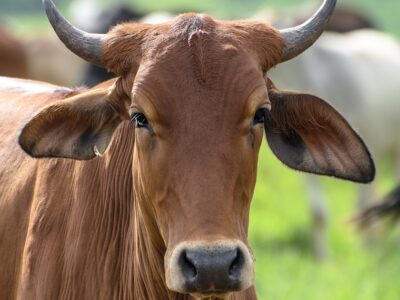Below you can find a complete list of Belizean animals. We currently track 263 animals in Belize and are adding more every day!
Belize is a small Central American country with a rich concentration of wildlife. Before the arrival of Europeans, it was once a part of the Maya Civilization. It later gained independence in 1981 from the United Kingdom. Situated against the Caribbean Sea, the country shares a border with Mexico and Guatemala to the north and west. The land is dominated by mountains, swamps, and tropical jungle ecosystems. It’s also known for the spectacular coral reef system just off the coast.
The Official National (State) Animal of Belize
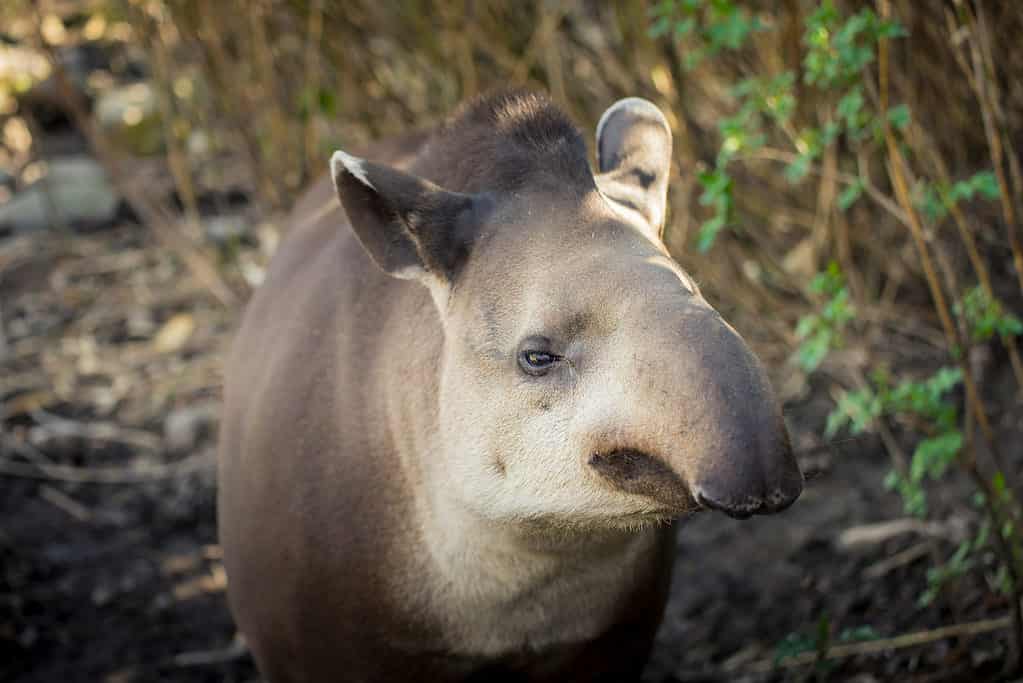
The national animal of Belize is Baird’s Tapir.
©Silvia.cozzi/Shutterstock.com
The national animal of Belize is Baird’s tapir. Also the largest animal of the country (see below), the tapir is also known as the mountain cow. They are considered a living fossil because there body shape has not evolved much over the last 35 million years. Currently endangered, they are listed as a protected species in Belize. Tapirs are an important part of the rainforest ecosystem and are considered essential to the area.
The national bird is the keel-billed toucan, one of the most iconic avian species of the Neotropics, only occurring in this part of the world. This bright bird has diversity, strength, beauty and a strong presence in the rainforest which is why it earned its symbol as the national bird.
Where To Find The Top Wild Animals In Belize
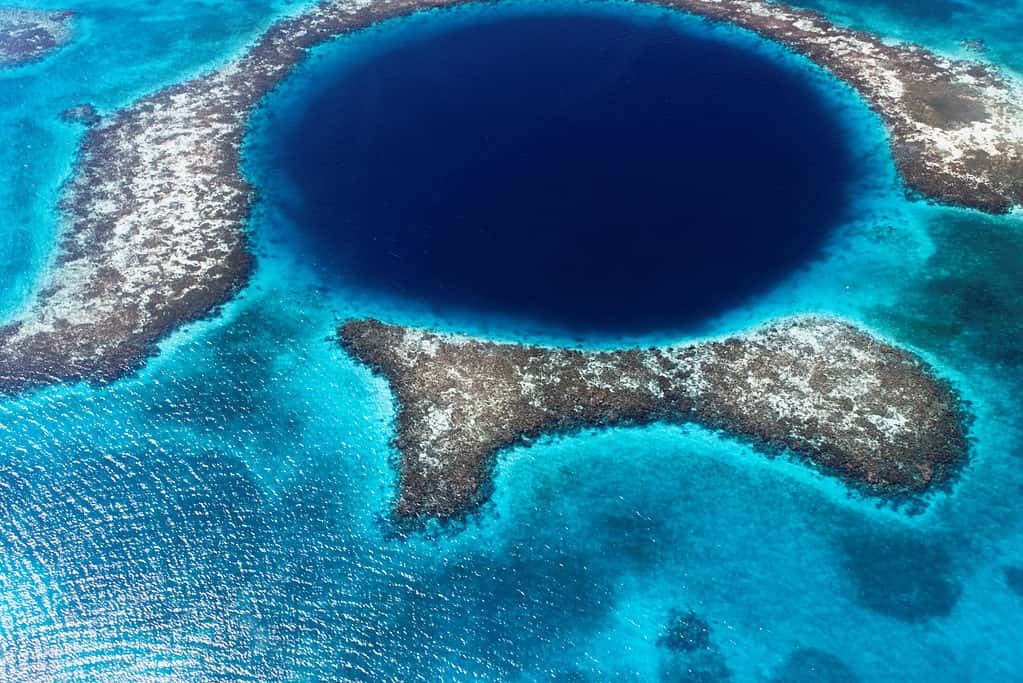
©iStock.com/Lomingen
Belize has established dozens of national parks, wildlife sanctuaries, and forest reserves throughout the country. These are the best places to find wildlife outside of zoos.
- Hol Chan Marine Reserve, located off the northeastern coast of Belize, is a rich reservoir of coral reefs, mangrove forests, and seagrass beds. It is an excellent place to find sea turtles, dolphins, stingrays, lobsters, seahorses, and marine fish. Shark Ray Alley has a very high concentration of nurse sharks and rays.
- The Great Blue Hole, located well to the east of Belize City, is one of the most popular scuba diving destinations in the world. It also produces great aerial photography.
- Cockscomb Basin Wildlife Sanctuary, located in the Stann Creek District of south-central Belize, was established in 1984 to protect the jungles and watersheds along the slopes of the Maya Mountains. Outside of zoos, it is considered to be one of the premier destinations for jaguar sightings in the world.
- Guanacaste National Park is located in the central Cayo District, about 50 miles to the west of Belize City. More than a hundred aerial bird species have been observed in the park, including kingfishers, woodpeckers, warblers, motmots, and the black-faced ant thrush. Visitors can also find the white-tailed deer, armadillo, kinkajou, and other wild mammals.
- Laughing Bird Caye is an island located off the southeastern coast. It is part of the Belize Barrier Reef and a larger UNESCO World Heritage Site.
- Finally, the Community Baboon Sanctuary, located in the Belize District, is one of the best places outside zoos to find black howler monkeys.
The Great Blue hole is a massive marine sinkhole located off the coast of Belize and is one of the most popular tourist attractions. WIth a depth of more than 300 feet and an extensive cave system, only experience divers are permitted inside, however, all are welcome at the surface. This hole has incredible biodiversity and is home to various species of sharks, including hammerheads, nurse, black tip, Caribbean reef and bull sharks.
The Most Dangerous Animals In Belize Today
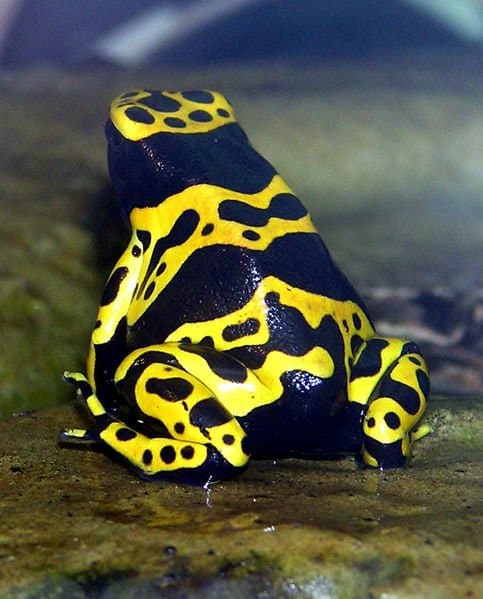
Poison Dart Frog
©Arpingstone, Public domain, via Wikimedia Commons – Original / License
- Maya Coral Snakes – Sporting a red body and alternating black and yellow bands, this species is very conspicuous and best avoided. When frightened, it can inject potentially deadly venom into its victims. Fortunately, this species is rarely seen and usually slinks away at the first sign of contact with people. Their short fangs may also have difficulty penetrating clothing.
- Fer-de-Lance – Large, aggressive, and dangerous, this venomous pit viper can be identified by the broad, flattened head and the dark triangle patterns surrounded by lighter edges. Once injected, the venom can easily disrupt the cardiac system and cause bleeding, swelling, and necrosis. If left untreated, the affected limb may need to be amputated, and death can occur in a small number of cases.
- Poison Dart Frogs – These small, inconspicuous frogs may harbor some of the most potent toxins on the planet. When threatened, they can secrete the toxin directly through their skin and infect their victims. Their bright coloration is usually a signal to predators that they should not be trifled with. Many dart frogs acquire poison from the foods they consume.
- American Crocodiles – Native to rivers, coasts, swamps, mangroves, and other small bodies of water, the American crocodile will sometimes attack people who wander in its territory, but despite their fearsome reputation, actual fatalities are very rare.
Poison dart frogs are not only considered one of the most toxic species on the Earth but they are also the most brightly colored frogs in the world. Each frog has a different color that is a warning sign to predators not to eat them, the more colorful, the more toxic. It is believed that they get their poison from some of the insects that they ingest, most likely ants and centipedes. Because they do not inject their toxins, they are considered poisonous, not venomous.
Endangered Animals In Belize
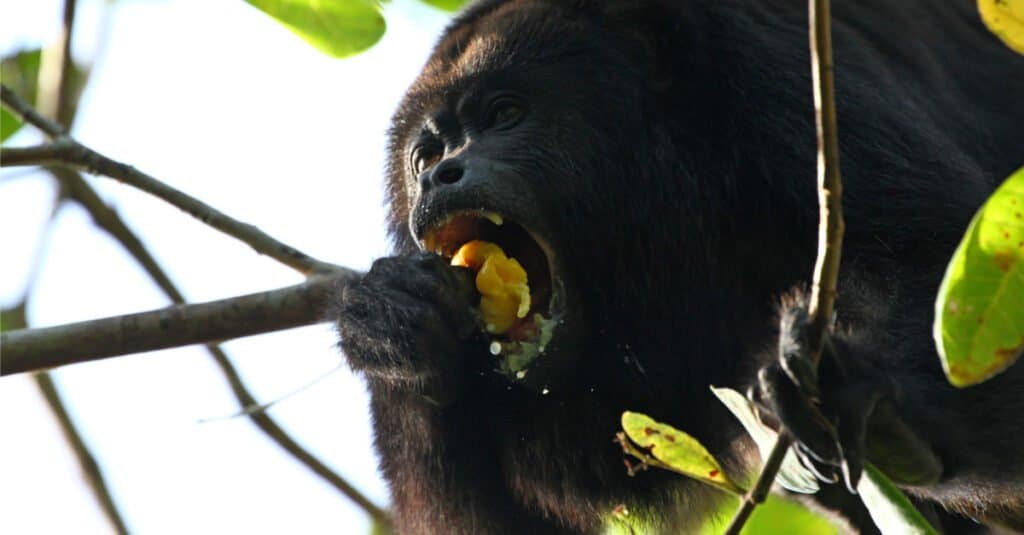
The Guatemalan Black Howler monkey has been endangered since 2003.
©iStock.com/andyjkramer
- Guatemalan Black Howler – Clad in all-black fur, the howler is among the largest species of the New World monkeys in the region. Famous for its loud howling noise, this species has become endangered from the combined effects of deforestation, hunting, and poaching for the pet trade.
- Geoffroy’s Spider Monkey – Easily identified by the long, black-colored limbs, the Yucatan spider monkey is a unique subspecies that inhabits Mexico, Guatemala, and Belize. It requires so much territory to survive that the destruction of the jungles has had a devastating impact on its numbers. It is now in danger of becoming extinct.
- Baird’s Tapir – Known locally as a mountain cow, the tapirs are unusual-looking hoofed mammals with a short prehensile trunk on their nose. Hunting and habitat loss have now made it endangered throughout Central and South America.
- West Indian Manatee – The entire eastern Central American coast is home to a unique subspecies called the Caribbean or Antillean manatee. It is in danger of becoming extinct from habitat loss and illegal hunting.
- Central American River Turtle – This smooth-shelled river turtle is the only living member of its family. After rampant hunting and exploitation, it is now on the verge of becoming extinct. A conservation program begun in 2011 has focused on repopulating wild populations by raising the turtle in captivity.
- Worm Salamanders – Belize contains a few species of lungless and partly fossorial salamanders. Fossorial means that they burrow and live underground. They have unique adaptations to facilitate this fossorial lifestyle.
The Guatemalan Black Howler monkey, also known as the Yucatan howler monkey, has seen its numbers decline by more than 60 percent due to disease, hunting and loss of habitat. It has been listed as an endangered species since 2003.
The Rarest Animal In Belize
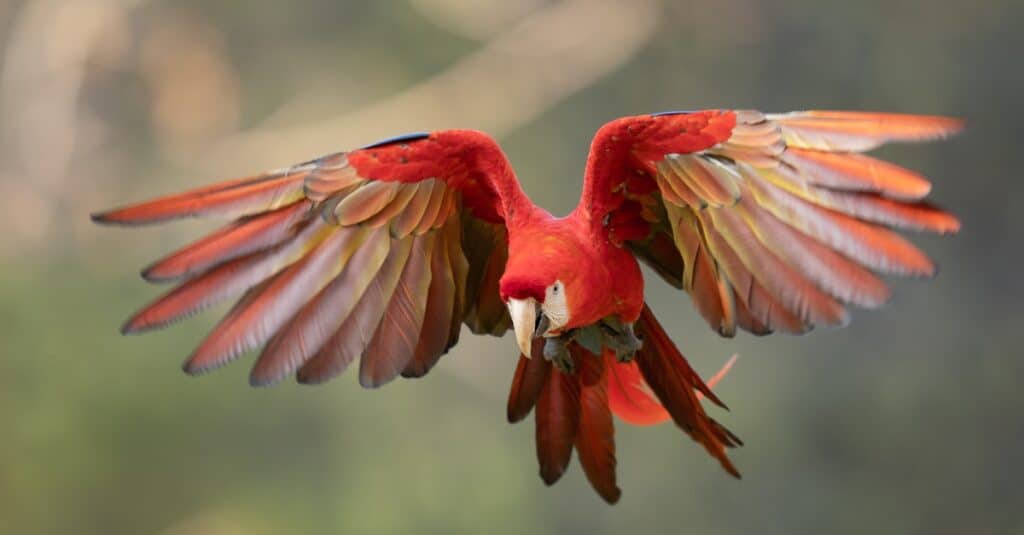
The scarlet macaw is one of several rare species that are native to Belize.
©iStock.com/sduben
The scarlet macaw is not only one of the rarest animals but is also one of the largest avian animals in Belize. There are an estimated 250 macaws residing in the rainforests of Belize. They are normally 35 inches, from head to tail feathers, and weigh about 2 pounds. Because of loss of habitat and illegal parrot trading, their numbers have suffered, in some cases leading to local extinction.
The Largest Animal In Belize
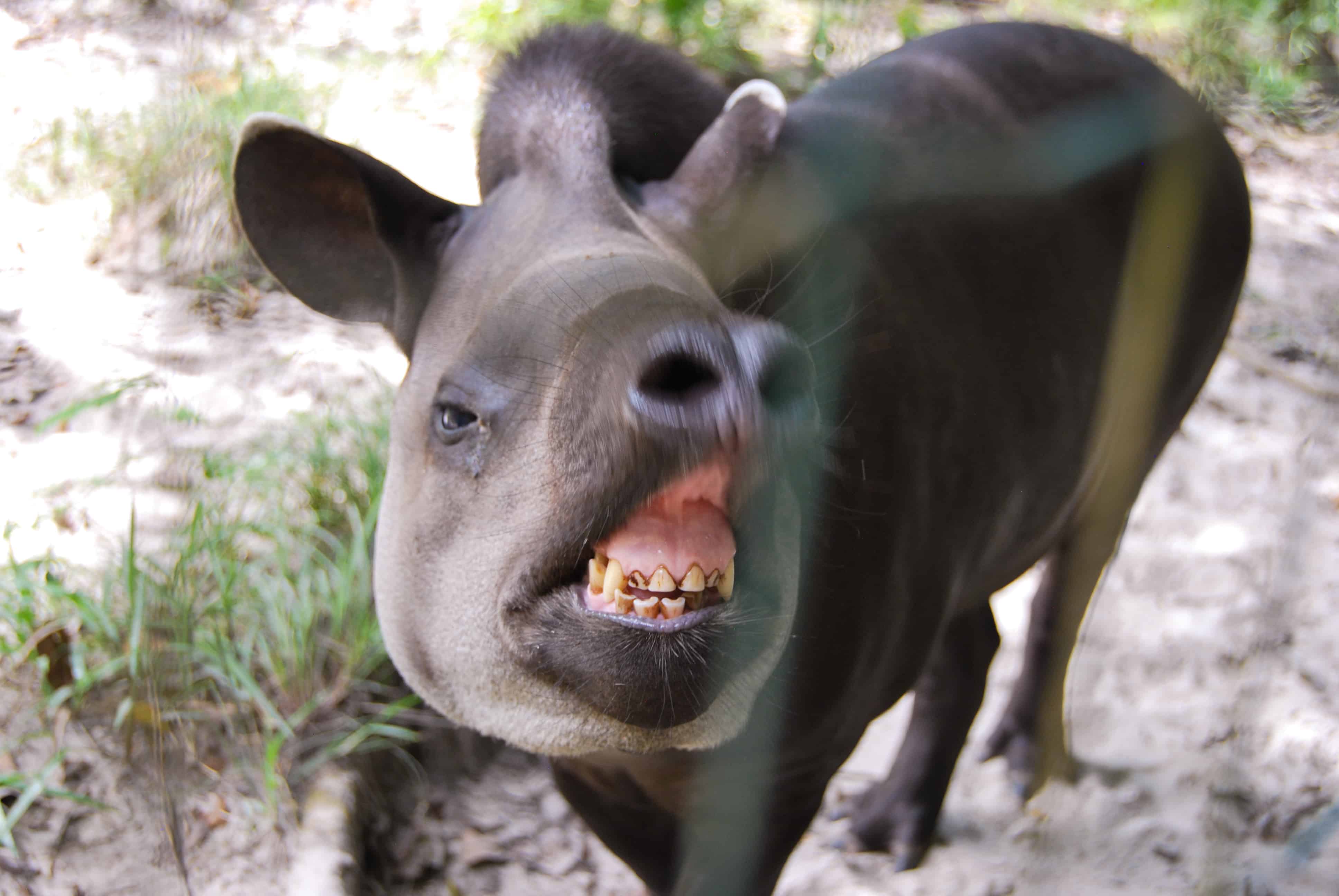
Baird’s Tapir, while not even remotely related to cows, is also known as a mountain cow.
©Margus Vilbas Photography/Shutterstock.com
The largest animal in Belize is also the country’s national animal, the Baird’s Tapir. They weigh between 300 to 500 pounds, can grow up to 6 feet long, and have an average lifespan of up to 22 years. Their closest relative is the rhinocerous and the horse. Vegeterian eaters, they like to snack on leaves, grass, fruits, aquatic vegetation, corn and various other crops. They may not look like it, but they are excellent swimmers and climbers too!
Belizean Animals
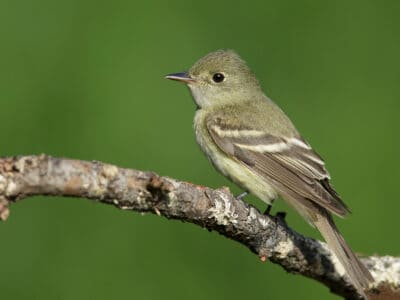
Acadian Flycatcher
Their nests are sloppily held together and have an abandoned appearance
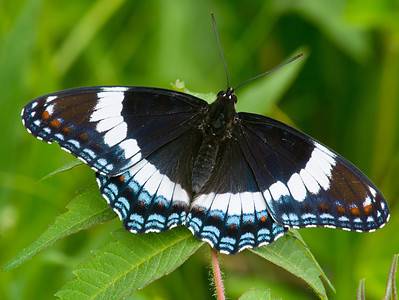
Admiral Butterfly
Stunningly beautiful wings
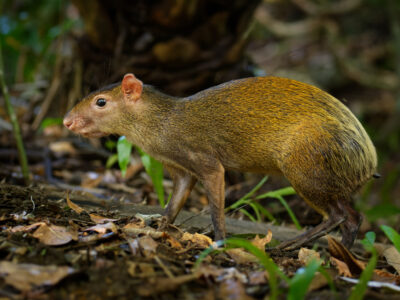
Agouti
The agouti is one of the only animals that can crack open Brazil nut pods!
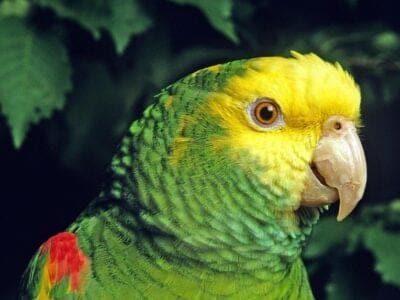
Amazon Parrot
These parrots can be trained to be "talking birds" that mimic human speech
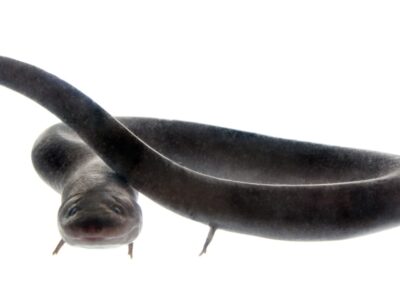
American Eel
Don't eat raw eel! Their blood is poisonous to humans when consumed raw.
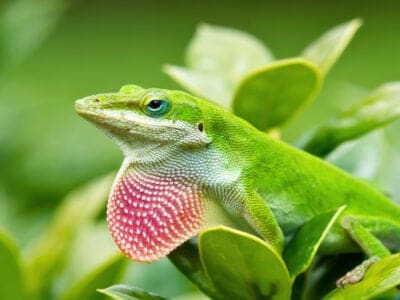
Anole Lizard
There are just under 400 species, several of which change color.

Ant
First evolved 100 million years ago!
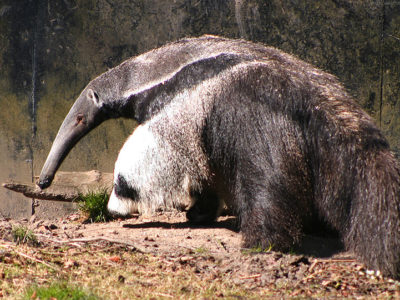
Anteater
Has the longest tongue of any animal in relation to its body size!
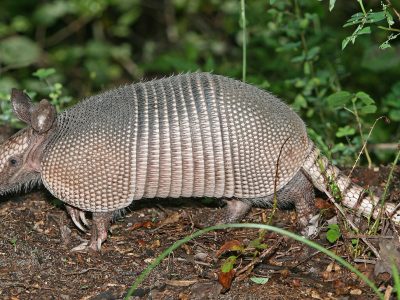
Armadillo
Can curl into a hard, protective ball!

Armyworm
They are so named because they "march" in armies of worms from one crop to another in search of food

Barn Owl
Found everywhere around the world!

Barn Swallow
Older offspring help care for new hatchlings.
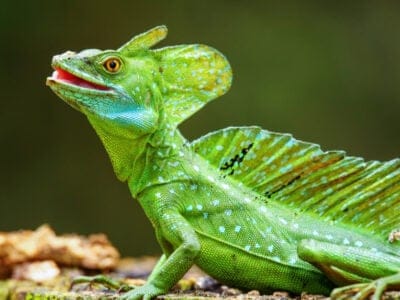
Basilisk Lizard
Can run/walk on water.

Bat
Detects prey using echolocation!
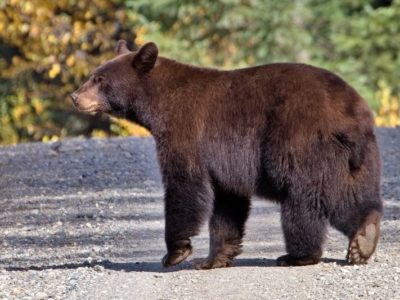
Bear
There are 8 different species!

Bed Bugs
Bed bugs feed for 4-12 minutes.

Bee
Rock paintings of bees date back 15,000 years

Beetle
There are more than 350,000 different species

Bird
Not all birds are able to fly!

Biscuit Beetle
The biscuit beetle form a symbiotic relationship with yeast

Black Widow Spider
They typically prey on insects!
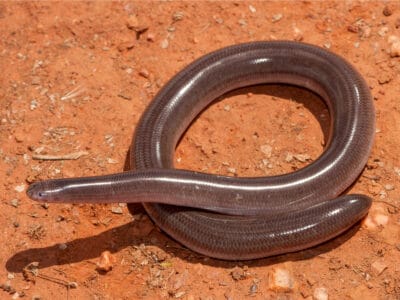
Blind Snake
The blind snake is often mistaken for a worm.
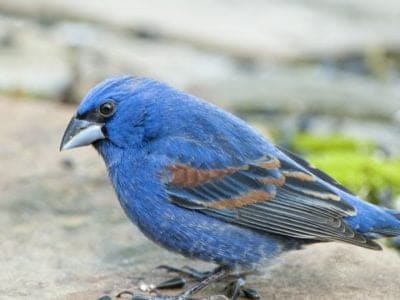
Blue grosbeak
Blue grosbeak parents take off the head, legs and wings of an insect before feeding it to their baby.
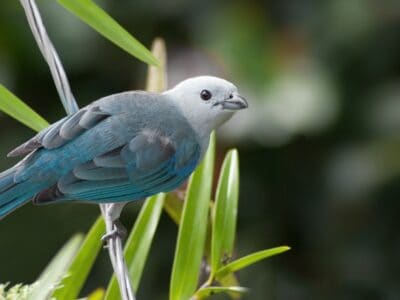
Blue Tanager (Blue-Grey Tanager)
They travel and forage in pairs or groups
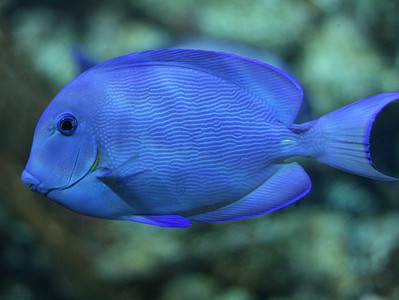
Blue Tang
One of the most colorful members of the genus Acanthurus
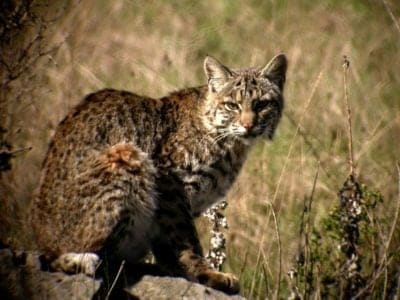
Bobcat
About double the size of a domestic cat!
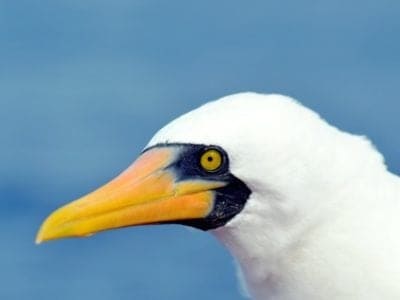
Booby
Seabirds found across the South Pacific!
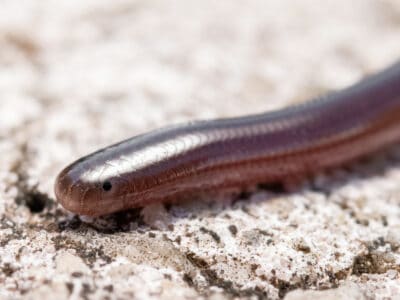
Brahminy Blindsnake
These snakes have been introduced to all continents, except Antarctica!
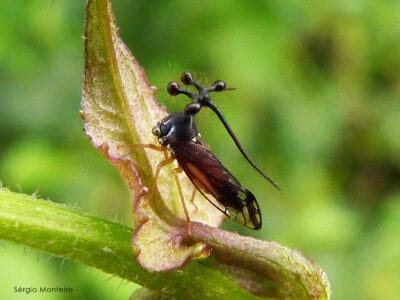
Brazilian Treehopper
“Mild-Mannered Minimonsters”

Brown Dog Tick
Can live its entire life indoors
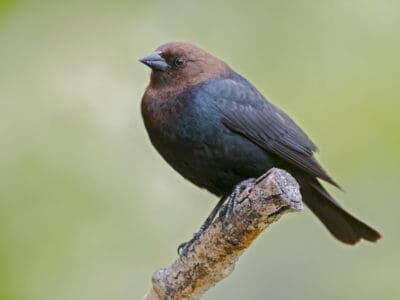
Brown Headed Cowbird
Males are generally monogamous during mating season and will protect the female from other males. However, females tend to venture from their partners and mate with other males.
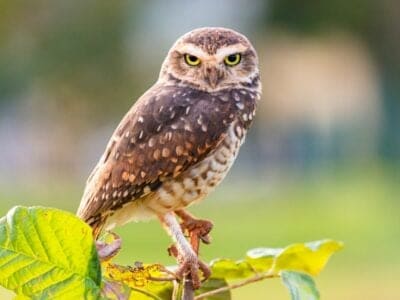
Burrowing Owl
The burrowing owl lives in underground burrows

Butterfly
There are thought to be up 17,500 species!
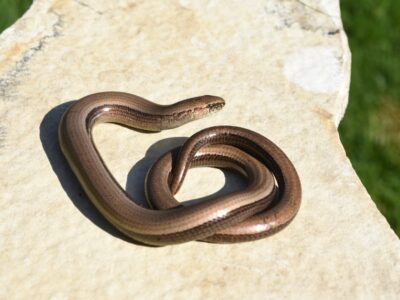
Caecilian
Some species' babies use their hooked or scraper-like teeth to peel off and eat their mother's skin
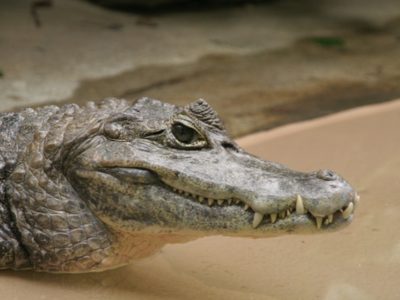
Caiman
Can grow to up 6 meters long!

Camel Cricket
The camel crickets that are found in the USA are light brown in color. They also have dark streaks all over their body.

Carpenter Ant
Carpenter ants can lift up to seven times their own weight with their teeth!

Cat
May have been domesticated up to 10,000 years ago.

Caterpillar
The larvae of a moth or butterfly!

Catfish
There are nearly 3,000 different species!
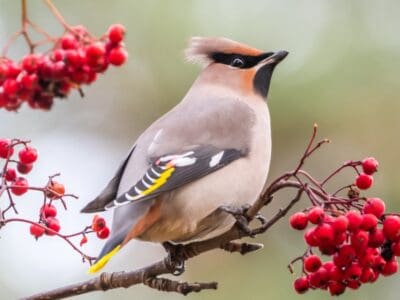
Cedar Waxwing
Their feathers have red, waxy tips that can be hard to identify unless you’re up close.

Centipede
There are about 3,000 documented species!
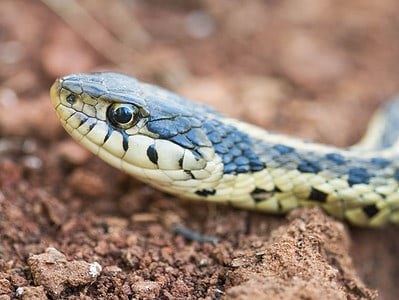
Checkered Garter Snake
It has the ability to expel a stinky liquid from its body as a way to make predators (and humans) retreat!
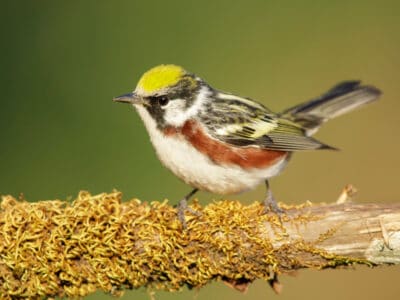
Chestnut-Sided Warbler
They inhabit regrowing forests

Chicken
First domesticated more than 10,000 years ago!

Cockroach
Dated to be around 300 million years old!

Codling Moth
Pupae are able to undergo diapause to survive poor fruit yield years and winter.
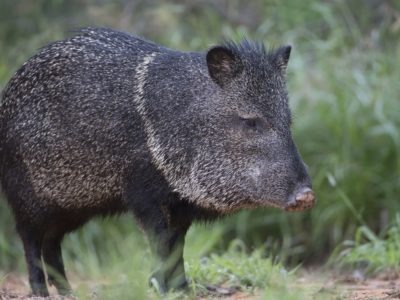
Collared Peccary
Form bands of up to 12 individuals!

Common Furniture Beetle
The common furniture beetle feeds exclusively on wood

Common House Spider
House spiders have the ability to eat most insects in a home.
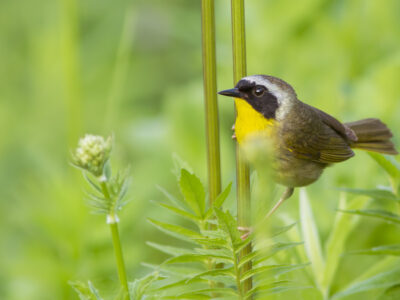
Common Yellowthroat
The Common Yellowthroat stays close to the ground and uses stealth to survive!
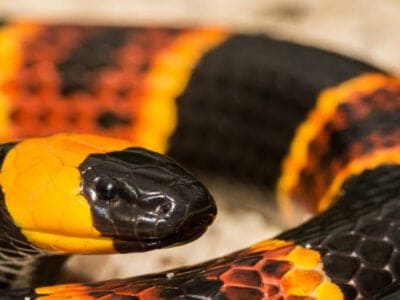
Coral Snake
There are over 80 species of coral snake worldwide.

Cormorant
They can fly 35 mph and dive 150 feet below water.

Cow
There are nearly 1.5 billion worldwide!

Crab
There are 93 different crab groups

Crab Spider
Crab Spiders can mimic ants or bird droppings

Cricket
Male crickets can produce sounds by rubbing their wings together
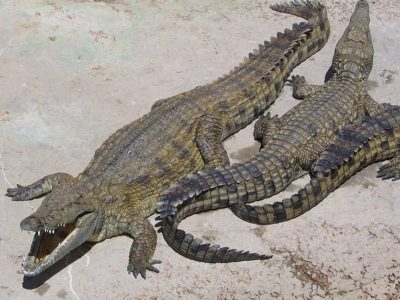
Crocodile
Have changed little in 200 million years!
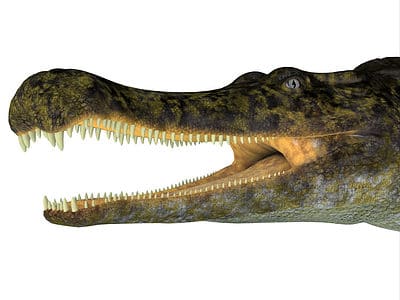
Crocodylomorph
Crocodylomorphs include extinct ancient species as well as 26 living species today.

Crow
A group of these birds is called a Murder.

Dog
First domesticated in South-East Asia!

Dog Tick
Dog ticks feed on dogs and other mammals

Donkey
First domesticated 5,000 years ago!

Dragonfly
It's larvae are carnivorous!
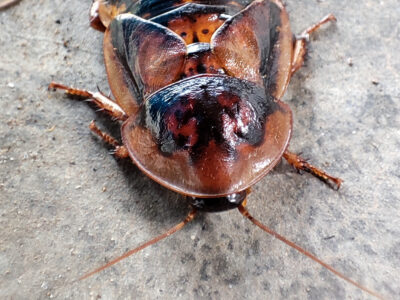
Dubia Cockroach
The most popular species of feeder roach

Duck
Rows of tiny plates line their teeth!

Dung Beetle
The dung beetle can push objects many times its own weight
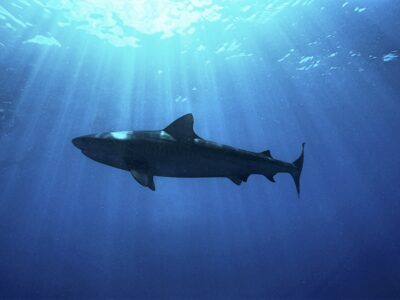
Dusky Shark
The Dusky Shark sometimes eats trash discarded by humans.
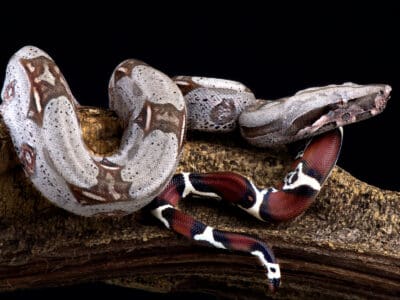
Dwarf Boa
Some species can change color from dark to light, and back again.

Earthworm
They are hermaphrodites, which means they have male and female organs

Earwig
There are nearly 2,000 different species!
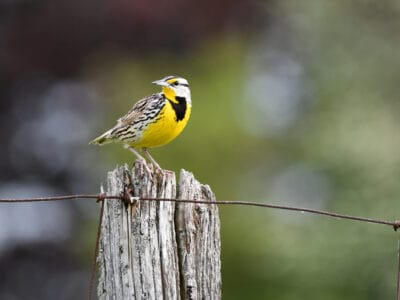
Eastern Meadowlark
They can live up to 9 years.
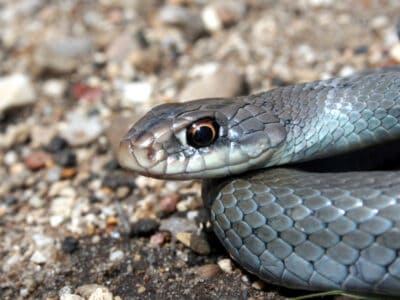
Eastern Racer
Fast and Furious!

Eel
Eels can be a mere few inches long to 13 feet!
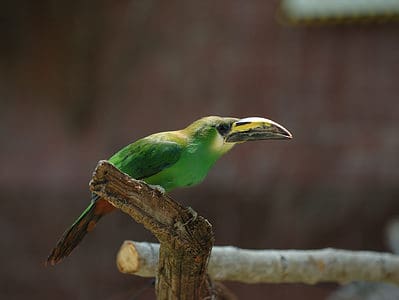
Emerald Toucanet
Emerald Toucanets spend their lives high in the canopy of tall forests, almost never coming to the ground!
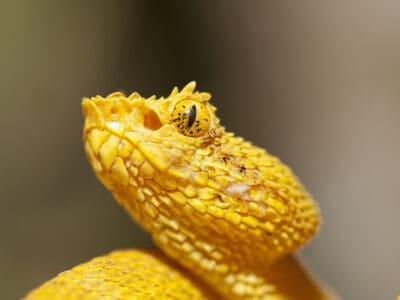
Eyelash Viper
While the eyelash viper can be a pet, be cautious – they are extremely venomous!

False Widow Spider
False spiders actually prey on black widow spiders and other hazardous spiders
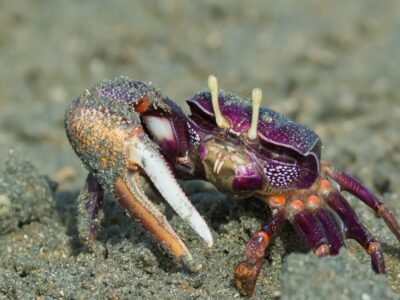
Fiddler Crab
The fiddler crab gets its name from the motion the males make with their over-sized claw during the mating ritual.

Firefly
The firefly produces some of the most efficient light in the world
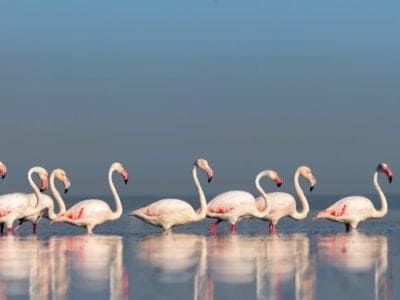
Flamingo
Sleeps on just one leg!

Flea
Adult fleas can jump up to 7 inches in the air

Fly
There are more than 240,000 different species!
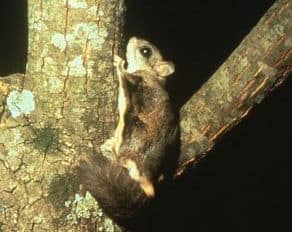
Flying Squirrel
Can glide up to 90 meters!

Frog
There are around 7,000 different species!

Fruit Fly
Fruit flies are among the most common research animals in the world
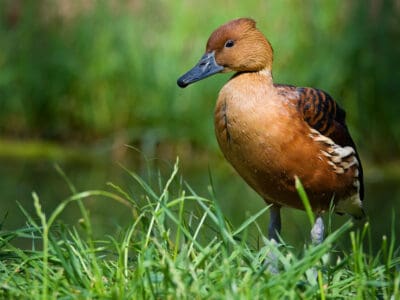
Fulvous Whistling Duck
They build a ramp from their nest, which leads to a nearby water source
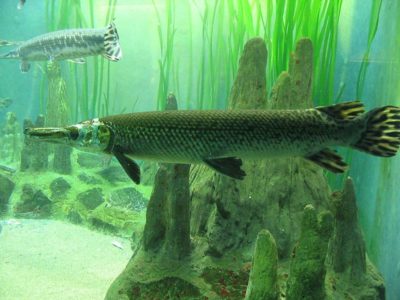
Gar
Can grow to more than 3m long!
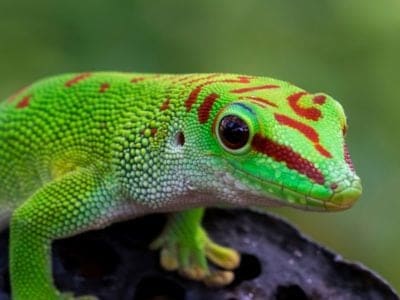
Gecko
There are thought to be over 2,000 species!

German Cockroach
The most common type of urban roach

Glowworm
Found inhabiting dense woodland and caves!

Gnat
Males form large mating swarms at dusk

Grasshopper
There are 11,000 known species!
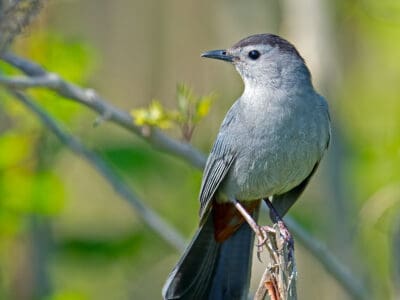
Gray Catbird
Their songs have cat-like qualities and can mimic other birds and animals, like tree frogs.
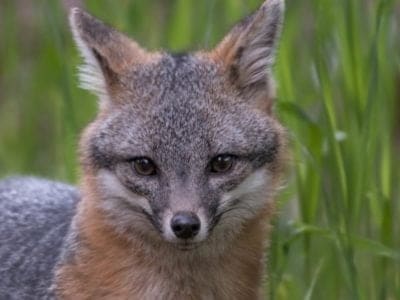
Gray Fox
The gray fox has retractable claws and a rotating wrist that allow it to climb trees with some proficiency
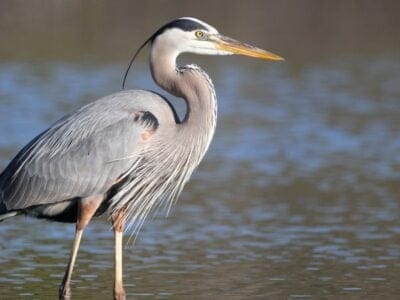
Great Blue Heron
Their wingspan is larger than an eagle’s; both males and females help hatch the eggs; rich in symbolism
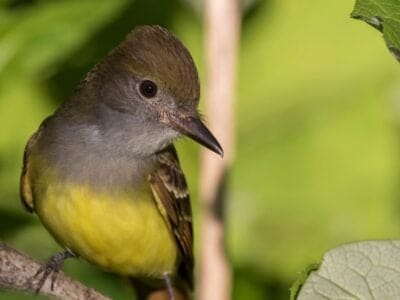
Great Crested Flycatcher
This species makes use of some truly unusual nesting material, including snakeskin and garbage
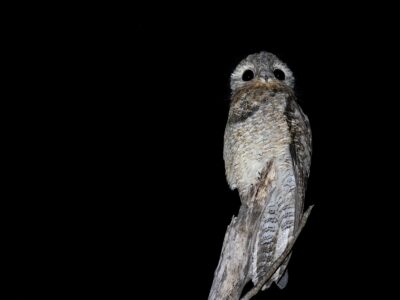
Great Potoo Bird
At night, they make a terrifying low call that sounds like a distressed moan or growl.
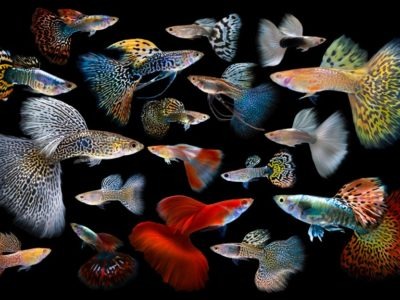
Guppy
Also known as the Millionfish!

Hamster
Able to run as quickly backwards as forwards!

Hare
Can reach speeds of over 50 mph!
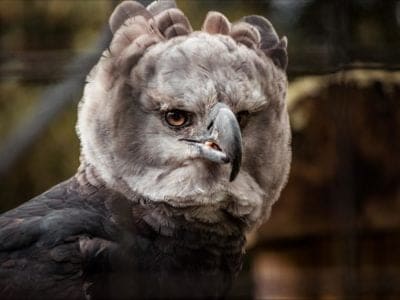
Harpy Eagle
Talon's the size of a grizzly bear's claws!
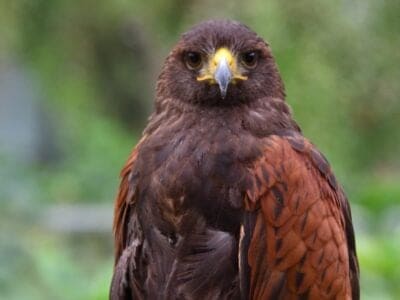
Harris’s Hawk
Their vision is eight times better than a human's

Hawk Moth Caterpillar
Many hawk moth caterpillars eat toxins from plants, but don’t sequester them the way milkweed butterflies do. Most toxins are excreted.
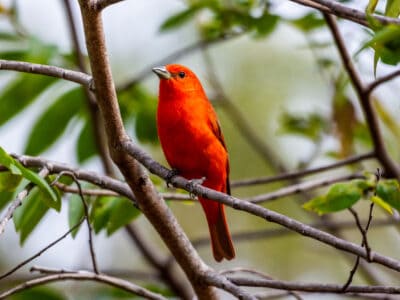
Hepatic Tanager (Red Tanager)
Parents and their young sing sweetly to each other
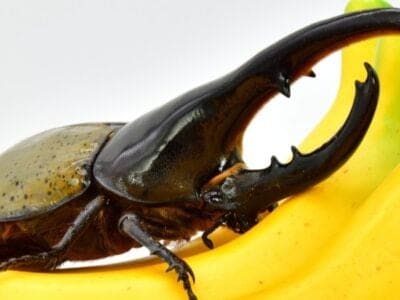
Hercules Beetle
This dynastine scarab beetle makes a weird huffing sound when it’s disturbed.
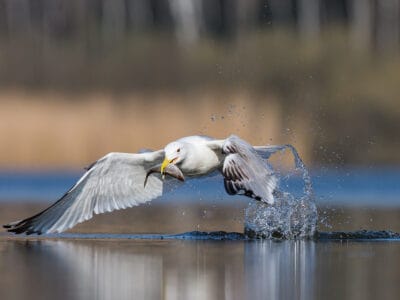
Herring Gull
They are loud, spirited birds with raucous cries that sound like bursts of laughter.

Honey Bee
There are only 8 recognized species!

Horse
Has evolved over 50 million years!

Horsefly
Horseflies have been seen performing Immelmann turns, much like fighter jets.
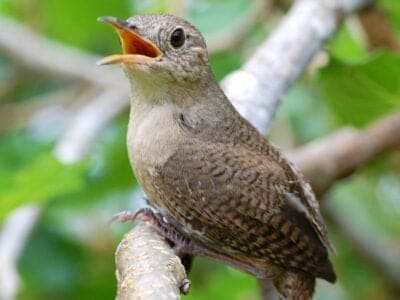
House wren
The wren’s epithet, aedon, comes from a Greek queen who accidentally killed her only son. She was actually aiming for her nephew, and Zeus took pity on her and turned her into a nightingale.

Housefly
The fly has no teeth
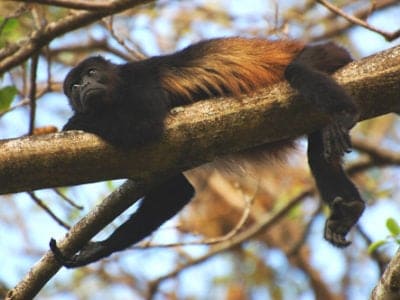
Howler Monkey
Spends 80% of it's time resting!

Human
Thought to have orignated 200,000 years ago!
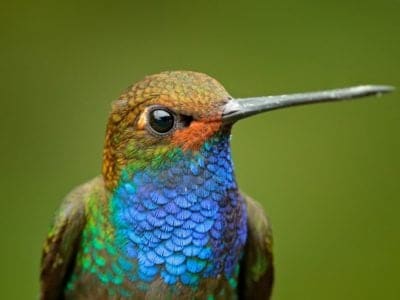
Hummingbird
Beat their wings up to 80 times per second!

Huntsman Spider
Some huntsman spiders have an interesting way of moving around. Some cartwheel while others do handsprings or backflips.
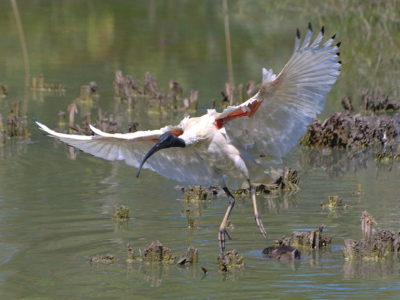
Ibis
Found in swamps, marshes and wetlands!

Iguana
Uses visual signals to communicate!

Insects
There are an estimated 30 million species!
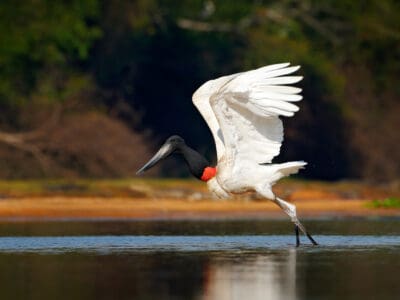
Jabiru
They form lifelong pair bonds and live in groups near water sources.
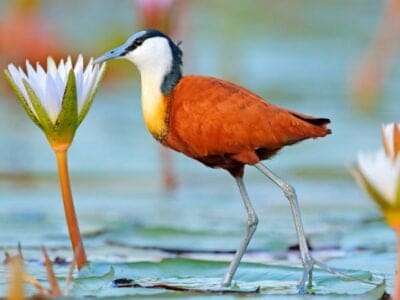
Jacana
The jacana has the ability to swim underwater
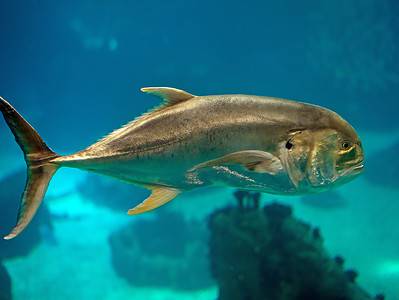
Jack Crevalle
One of the biggest species in the Caranx genus
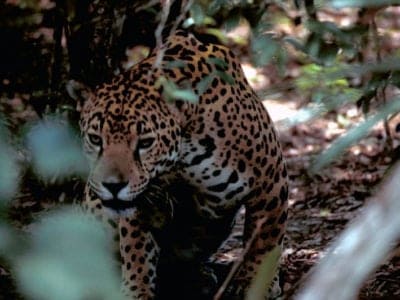
Jaguar
The largest feline on the American continent!

Jumping Spider
Some can jump 50 times the length of their bodies
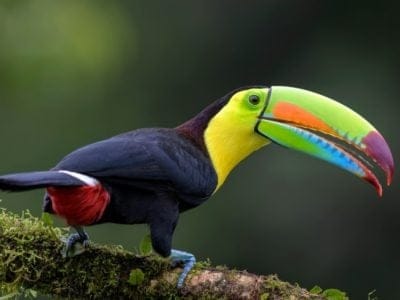
Keel-Billed Toucan
It's beak can reach nearly 20 cm long!
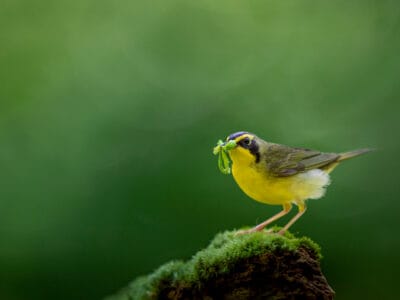
Kentucky Warbler
The Kentucky Warbler appears to wear bright yellow cat-eye glasses!

Kingfisher
Inhabits wetlands and woodlands worldwide!
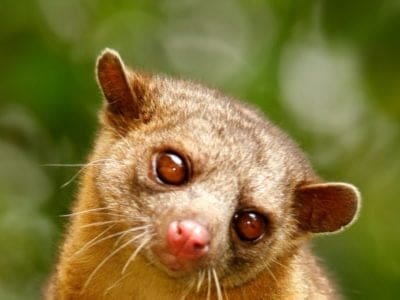
Kinkajou
The kinkajou is a nimble forest-dwelling mammal of Central and South America.

Ladybug
There are more than 5,000 species worldwide!

Leech
Has 10 pairs of eyes!
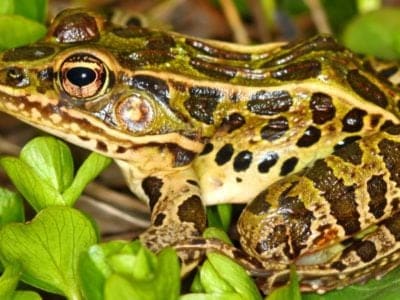
Leopard Frog
They can jump up to three feet

Lizard
There are around 5,000 different species!

Locust
Each locust can eat its weight in plants each day.
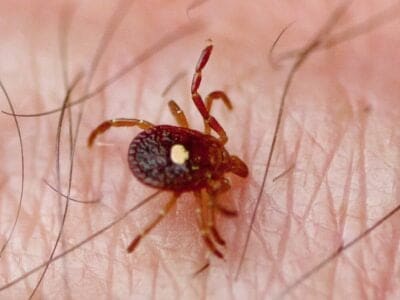
Lone Star Tick
Only females have the ‘lone star’ marking
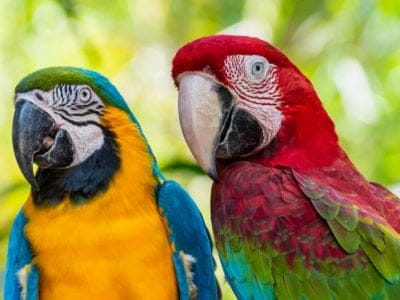
Macaw
The largest species of parrot in the world!
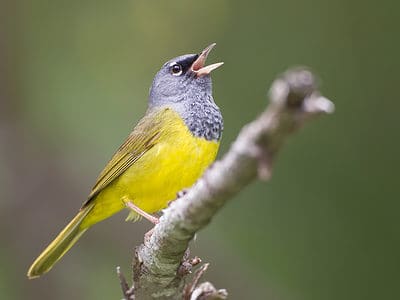
MacGillivray’s Warbler
The complicated story of how MacGillivray’s Warblers got their name involves three ornithologists, a physician and a compromise.
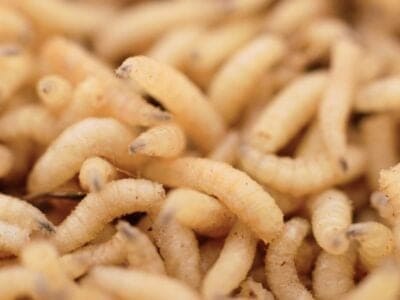
Maggot
Will only live in wet areas
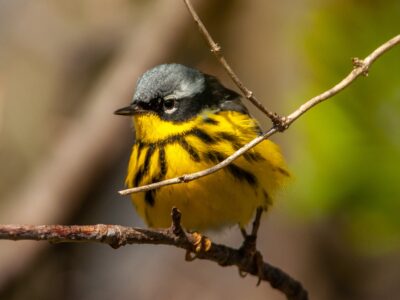
Magnolia Warbler
They line their nests with fungi strands
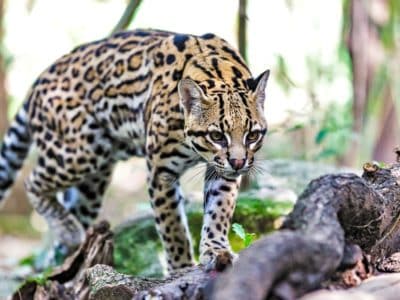
Margay
Margays are one of the world’s most highly adapted cat species for climbing trees!
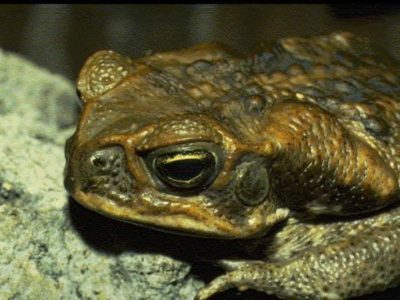
Marine Toad
Produces a toxin used in arrow darts!
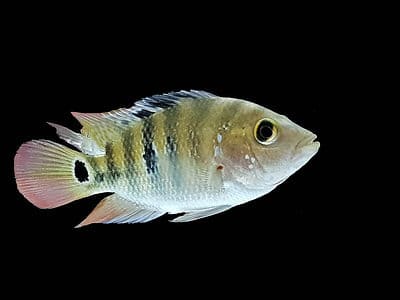
Mayan Cichlid
Mayan cichlids live longer in captivity than they do in the wild.

Mayfly
There are 2,500 known species worldwide!

Mealybug
They have a symbiotic relationship with ants.

Millipede
Some species have a poisonous bite!
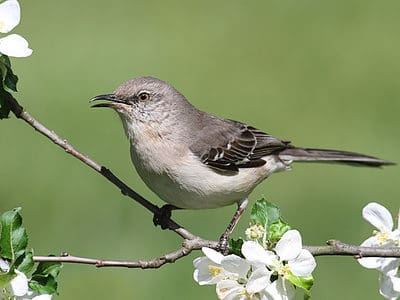
Mockingbird
Mockingbirds are incredible mimics that can learn hundreds of songs!

Mole
Primarily hunts and feeds on Earthworms!
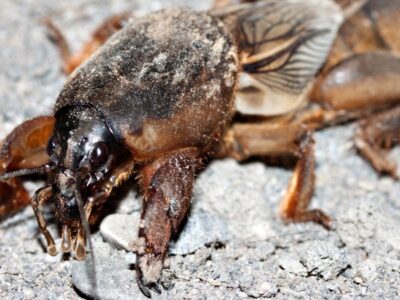
Mole Cricket
Adult Mole crickets may fly as far as 5 miles during mating season and are active most of the year.
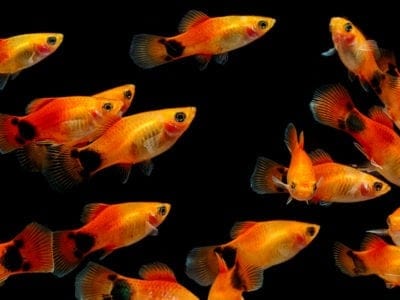
Molly
Known for their calm and peaceful nature!
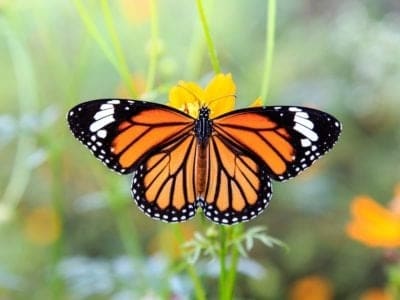
Monarch Butterfly
During migration, Monarch Butterflies may travel 250 or more miles each day.

Mongrel
Has characteristics of two or more breeds!
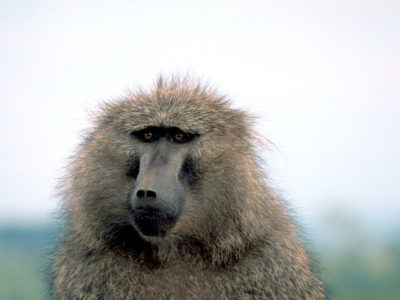
Monkey
There are around 260 known species!
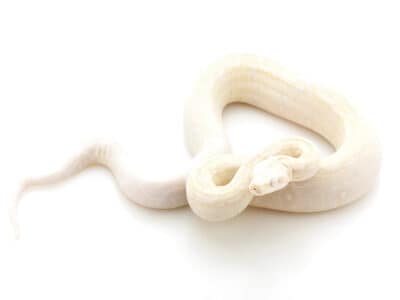
Moonglow Boa
Moonglow boas are the result of mixing three genetic traits.

Moorhen
Feeds on aquatic insects and water-spiders!
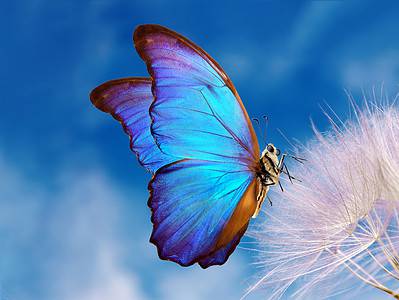
Morpho Butterfly
Collectors prize them for their bright wings

Mosquito
Only the female mosquito actually sucks blood

Moth
There are 250,000 different species!
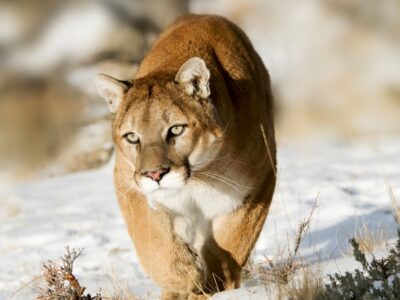
Mountain Lion
Has no real natural predators!
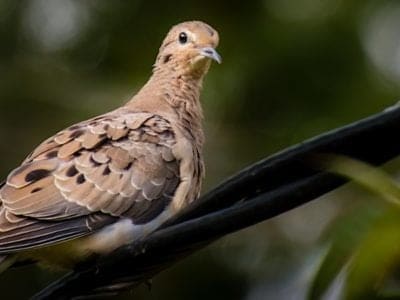
Mourning Dove
It is almost always the male who makes the famous sad sound, which is a wooing call
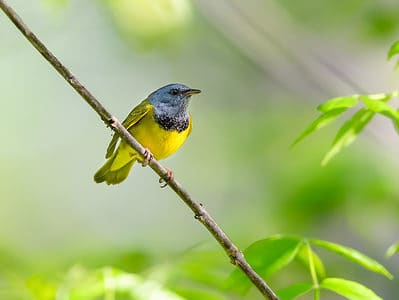
Mourning Warbler
The Mourning Warbler was named for its gray head, which resembles a mourning veil!

Mouse
Found on every continent on Earth!

Mule
The offspring of a horse and donkey parents!
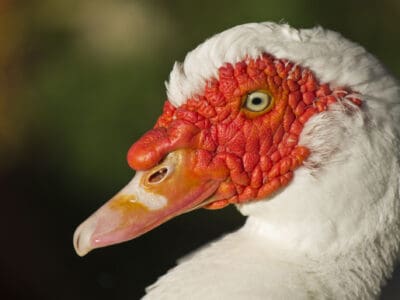
Muscovy Duck
Unlike most duck species, the Muscovy is silent and only makes noise when excited or threatened.

Nematode
Nematodes range in size from 1/10 of an inch to 28 feet long

No See Ums
There are more than 5,000 species.
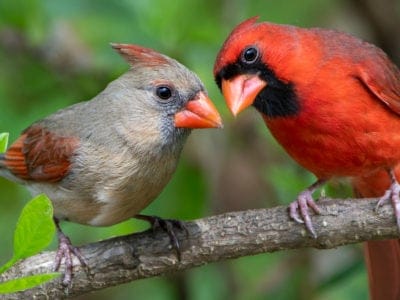
Northern Cardinal
Males are a bright red color, also called "cardinal red"
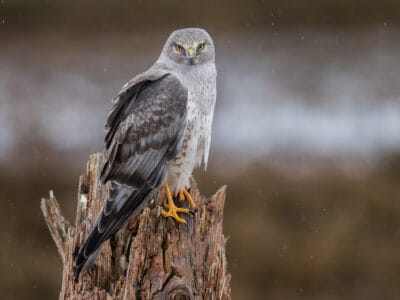
Northern Harrier
They can reach speeds of 25 Mph but prefer to soar low and slow.
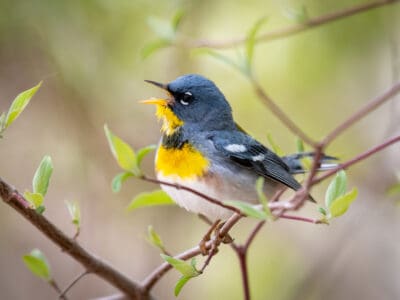
Northern Parula
They live in coffee and citrus plantations during the winter
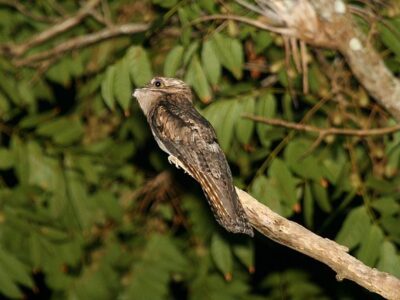
Northern Potoo
You can find them near golf courses in urban areas
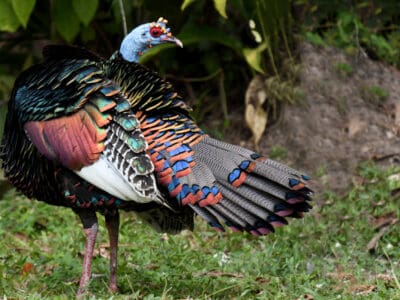
Ocellated Turkey
These birds are timid and hard to spot, but their noisy gobbles give them away.
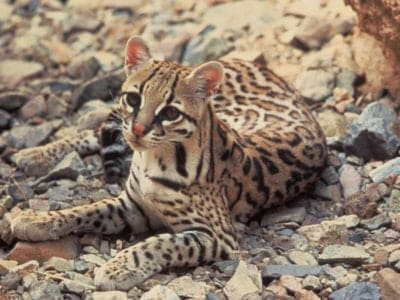
Ocelot
Also known as the Painted Leopard!
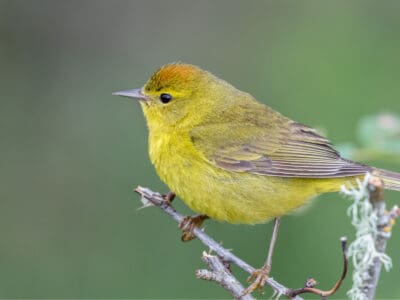
Orange-Crowned Warbler
Often mistaken for the Tennessee Warblers, which are equally dull.

Orb Weaver
Females are about four times the size of males

Osprey
They reuse nesting sites for 70 years!

Otter
There are 13 different species worldwide

Owl
The owl can rotate its head some 270 degrees
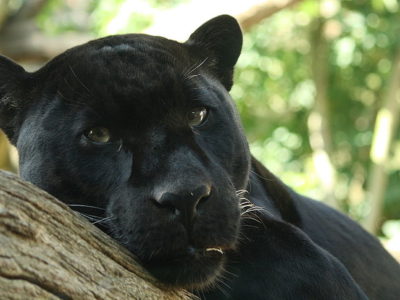
Panther
Prefers to hunt at night than during the day!
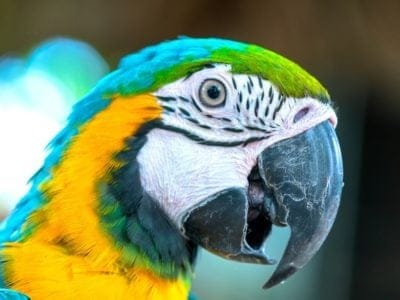
Parrot
Can live for up to 100 years!
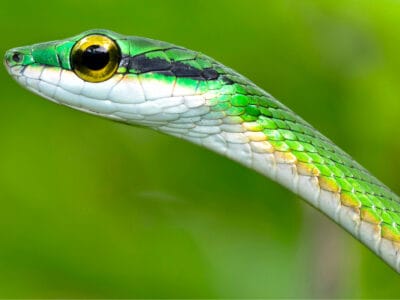
Parrot Snake
The parrot snake shows off with bright green and bronze colors that cover its entire body.

Peregrine Falcon
Fastest animal on Earth

Pheasant
Females lay between 8 and 12 eggs per clutch!

Pigeon
They can find their way back to their nests from up to 1300 miles away.
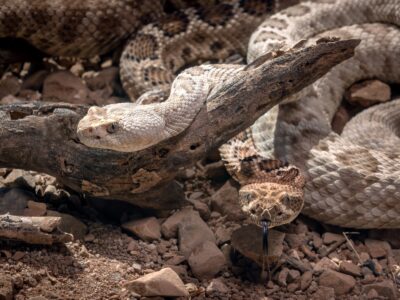
Pit Viper
Pit vipers's fangs fold up into their mouths when they don't need them.
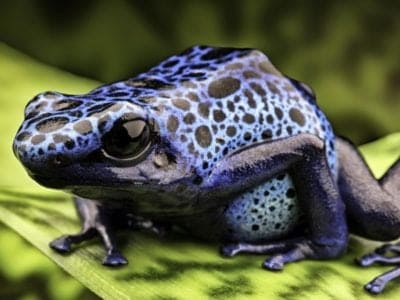
Poison Dart Frog
Inhabits the jungles of Central and South America!
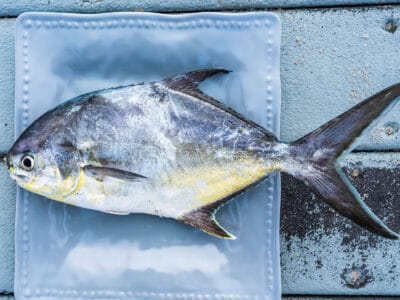
Pompano Fish
They are bottom-feeders
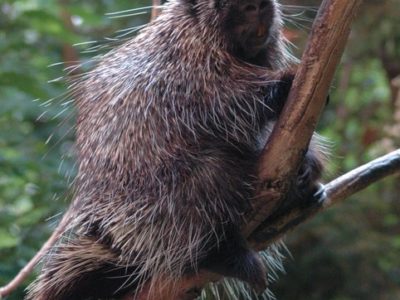
Porcupine
There are 30 different species worldwide!
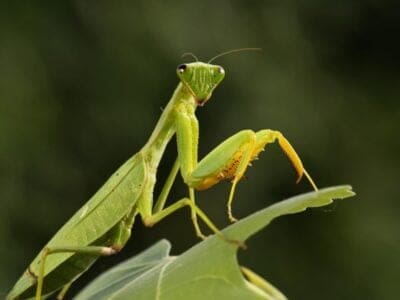
Praying Mantis
The mantis can turn its head 180 degrees.
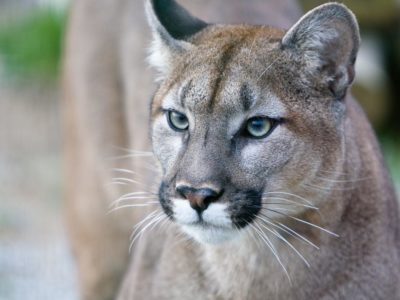
Puma
Has longer back legs than front legs!

Quail
Inhabits woodland and forest areas worldwide!
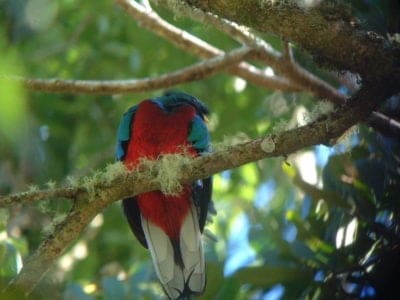
Quetzal
The tail feathers of the male can be 1m long!
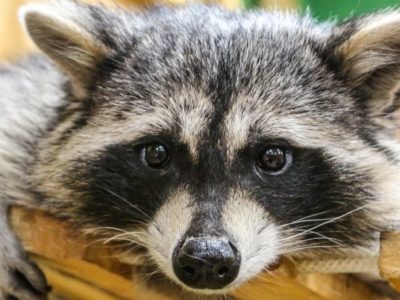
Raccoon
Known to wash their food before eating it!
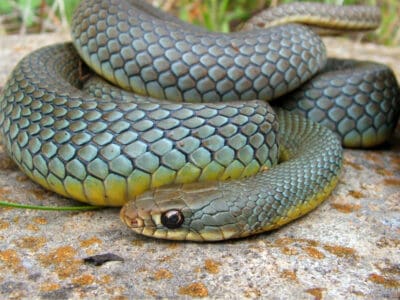
Racer Snake
The racer snake can speed away at up to 3.5 miles per hour

Rat
Omnivores that eat anything!
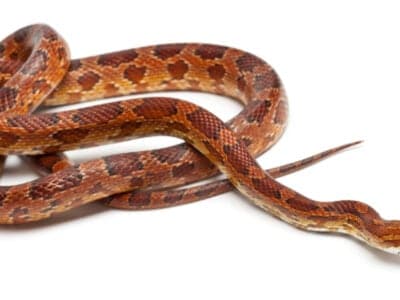
Rat Snakes
Rat snakes are constrictors from the Colubridae family of snakes.
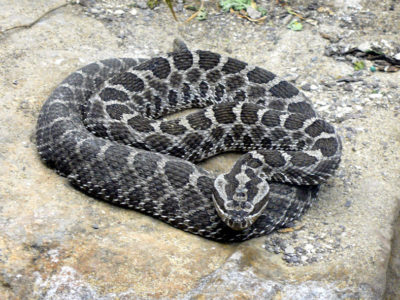
Rattlesnake
Rattlesnakes may have evolved their rattle to warn bison away from them.

River Turtle
Inhabits freshwater habitats around the world!

Rodents
The capybara, the world’s largest rodent, likes to be in and around bodies of water. Because of this, the Catholic Church in South America decided that it was a fish, and people were allowed to eat it during Lent and First Fridays.

Rooster
Will mate with the entire flock!

Rose-Breasted Grosbeak
This bird is also called cut-throat because the male looks like his throat has been cut and has bled over his breast.
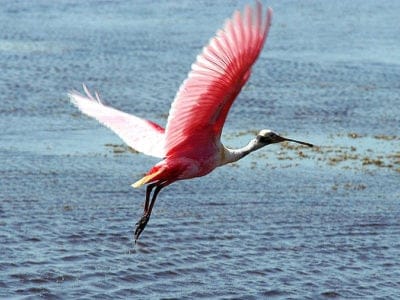
Roseate Spoonbill
The only Spoonbill in the western hemisphere!
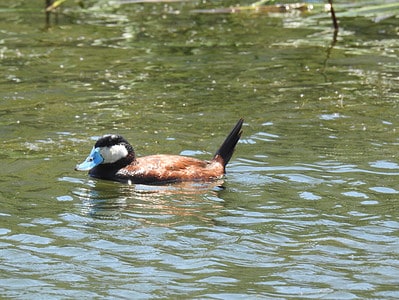
Ruddy Duck
Ruddy duck breeding males have bright blue bills!
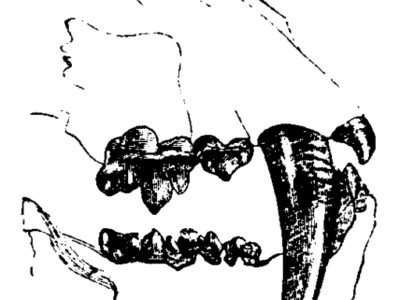
Saber-Toothed Tiger
Canines up to 7 inches long!

Sable Ferret
Ferrets were used during the Revolutionary War to keep down the rat population.
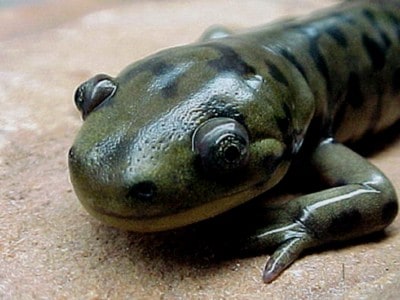
Salamander
There are more than 700 different species!
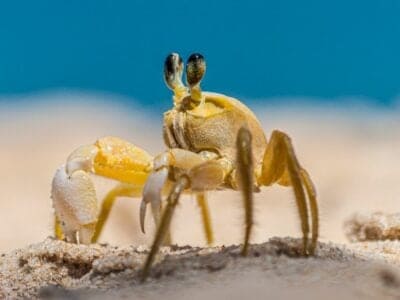
Sand Crab
The sand crab burrows beneath the sand with its tail
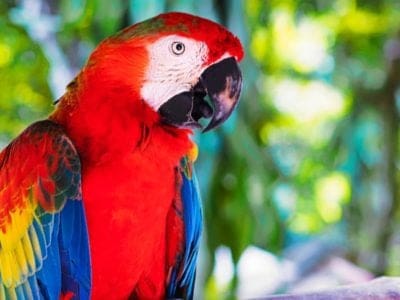
Scarlet Macaw
Like many parrots, the scarlet macaw is capable of vocal mimicry.
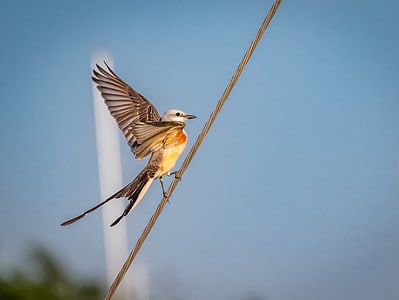
Scissor-tailed Flycatcher
Scissor-tailed flycatchers are known for their dramatically long tails!

Scorpion
There are around 2,000 known species!

Sea Eagle
The sea eagle tends to mate for life with a single partner

Seahorse
Males give birth to up to 1,000 offspring!
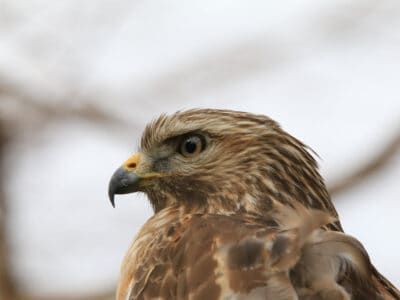
Sharp-Shinned Hawk
In captivity, sharp-shinned hawks can live up to 13 years. However, in the wild, this number is significantly reduced to 3 years!
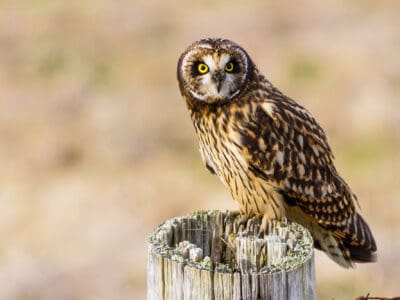
Short-Eared Owl
The short-eared owl is one of the most widespread owl species in the world, covering five continents.

Shrew
The spinal column of the shrew Scutisorex somereni is so strong and reinforced that it can support the weight of an adult human.

Shrimp
There are 2,000 different species worldwide!

Skink Lizard
Some skinks lay eggs in some habitats while giving birth to skinklets in other habitats.
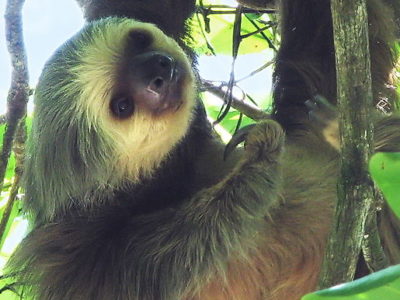
Sloth
It's body temperature is between 30 - 34 degrees!

Slug
They glide around on one foot, which is aided by the slime they produce
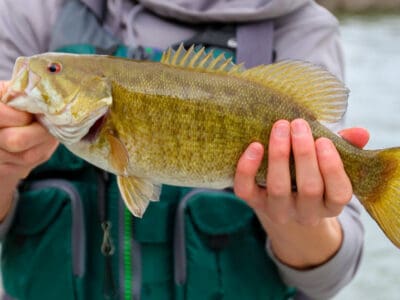
Smallmouth Bass
A fierce fighter!

Smokybrown Cockroach
Has up to 45 eggs per egg case

Snail
There are nearly 1,000 different species!

Snake
There are around 4,000 known species worldwide
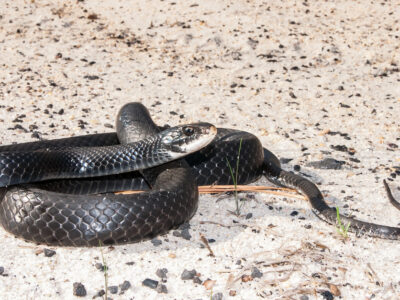
Southern Black Racer
These snakes live underground, beneath piles of leaf litter or in thickets, and they are expert swimmers.

Sparrow
There are 140 different species!

Spider Wasp
They prey on spiders to feed their larvae or they parasitize other spider wasps.

Squirrel
Small rodents found in woodlands worldwide!

Stick Insect
There are more than 3,000 different species!
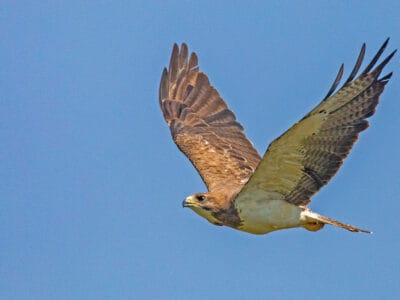
Swainson’s Hawk
Their wings form a “V” shape when flying.

Swan
Populations have been affected by pollution!
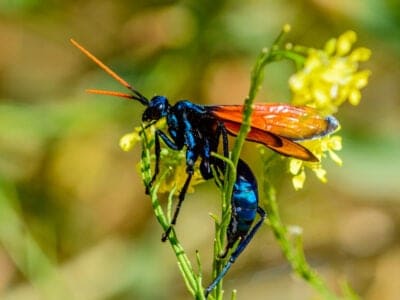
Tarantula Hawk
Tarantula hawks are excellent pollinators, especially for milkweed.

Termite
Their mounds can be up to 9 meters tall!

Thrush
The American robin is called the robin because its red breast reminded European settlers of the robin back in the old country.

Tick
They inject hosts with a chemical that stops them from feeling the pain of the bite

Tiger Beetle
The adult tiger beetle is one of the fastest land insects in the world

Tortoise
Can live until they are more than 150 years old!
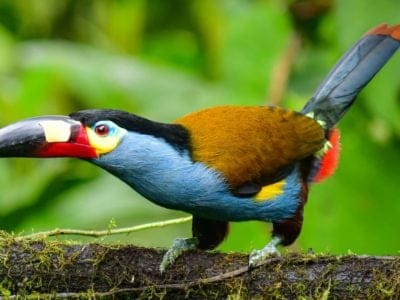
Toucan
There are more than 40 different species!

Tree Frog
Found in warmer jungles and forests!
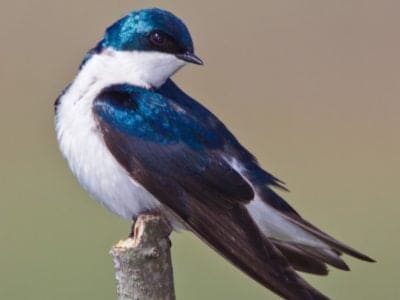
Tree swallow
The tree swallow can make more than a dozen distinct vocalizations

Turtles
Some species of aquatic turtles can get up to 70 percent of their oxygen through their butt.
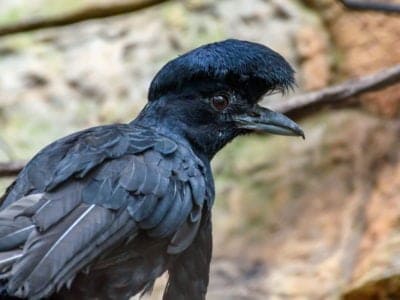
Umbrellabird
Migrates up and down the mountains!
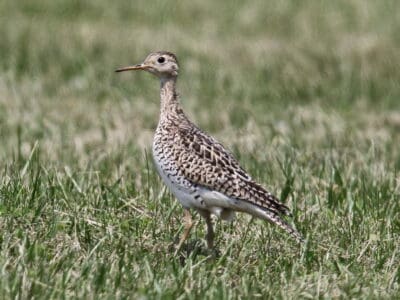
Upland Sandpiper
They make jerky movements as they walk through the grass, searching for food.
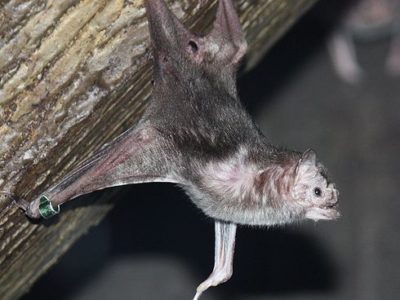
Vampire Bat
Have a heat sensor on the end of their nose!
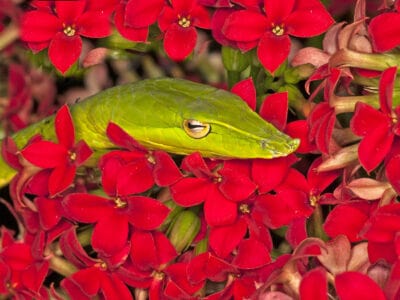
Vine Snake
A slender body and elongated snout give the vine snake a regal look.
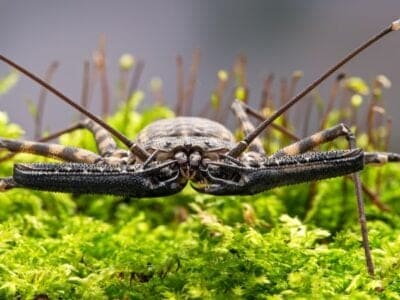
Vinegaroon
Vinegaroons can spray 19 times before the glands are depleted

Vulture
There are 30 different species worldwide!

Wasp
There are around 75,000 recognised species!
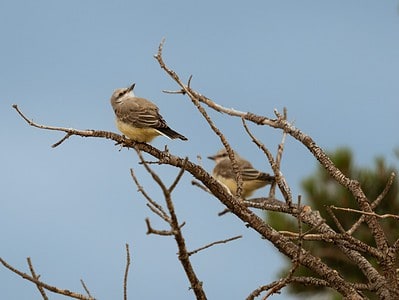
Western Kingbird
Western kingbirds have hidden red crown feathers that they can raise when threatened!
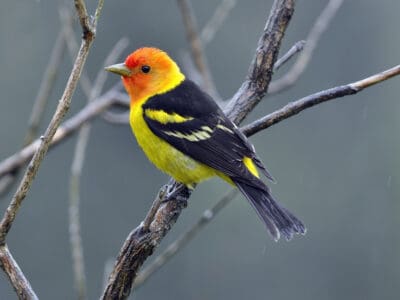
Western Tanager
They migrate farther north than any other tanager.
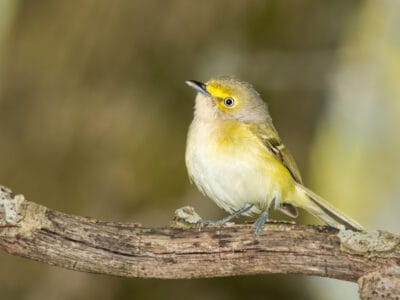
White-Eyed Vireo
During courtship, males put on exciting displays by fluffing their plumage, spreading their tails, and letting out a whining call.
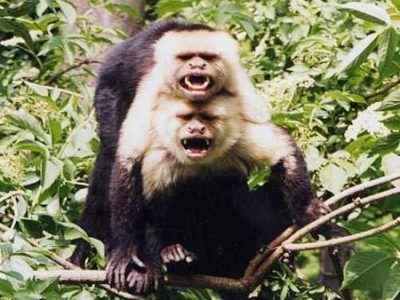
White-Faced Capuchin
One of the world's most intelligent monkeys!

White Ferret / Albino Ferrets
There are two different types of white ferrets!
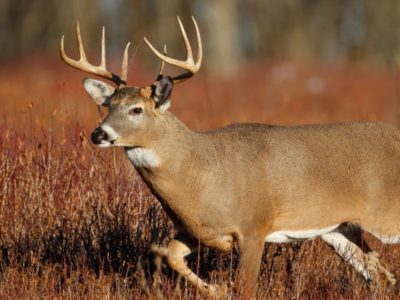
White-tail deer
White-tail deer are good swimmers
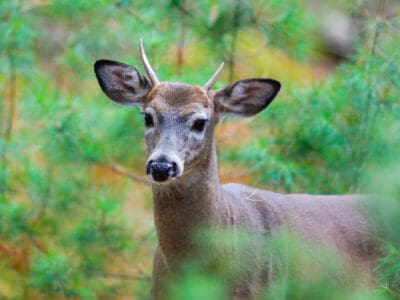
Whitetail Deer
Although deer are herbivores, they will sometimes eat mice and birds when they can catch them.
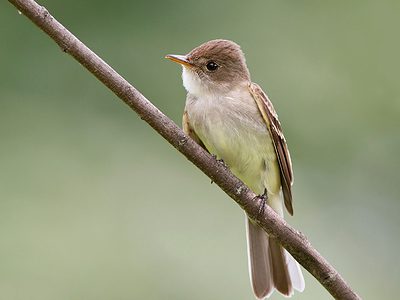
Willow Flycatcher
These birds live in the understory and are named for their propensity for flitting between willows and shrubs.

Wolf Spider
Carnivorous arachnid that hunts its prey.
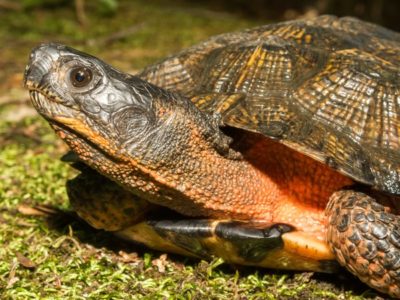
Wood Turtle
Temperature determines the sex of turtle eggs

Woodlouse
This animal can roll up into a ball

Woodpecker
There are 200 different species!

Worm
Doesn’t have eyes.
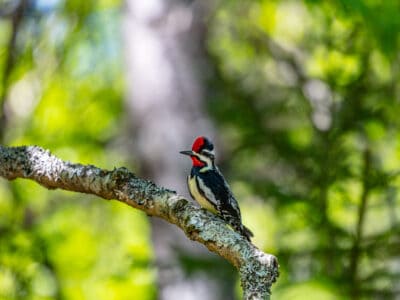
Yellow Bellied Sapsucker
The males are responsible for choosing the nesting tree most of the time. Luckily, cavity nests are often reused for multiple breeding seasons (up to 7 years.)
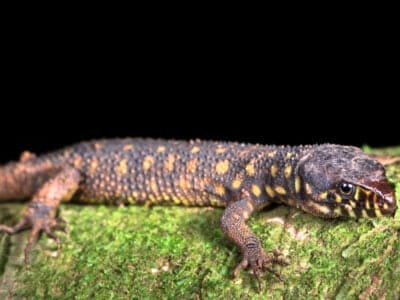
Yellow Spotted Lizard
Gives birth to live young.
Belizean Animals List
- Acadian Flycatcher
- Admiral Butterfly
- Agouti
- Amazon Parrot
- American Eel
- Anole Lizard
- Ant
- Anteater
- Armadillo
- Armyworm
- Barn Owl
- Barn Swallow
- Basilisk Lizard
- Bat
- Bear
- Bed Bugs
- Bee
- Beetle
- Bird
- Biscuit Beetle
- Black and White Warbler
- Black Widow Spider
- Blind Snake
- Blue grosbeak
- Blue Tanager (Blue-Grey Tanager)
- Blue Tang
- Bobcat
- Booby
- Brahminy Blindsnake
- Brazilian Treehopper
- Brown Dog Tick
- Brown Headed Cowbird
- Burrowing Owl
- Butterfly
- Caecilian
- Caiman
- Camel Cricket
- Carpenter Ant
- Cat
- Caterpillar
- Catfish
- Cedar Waxwing
- Centipede
- Checkered Garter Snake
- Chestnut-Sided Warbler
- Chicken
- Cockroach
- Codling Moth
- Collared Peccary
- Common Furniture Beetle
- Common House Spider
- Common Yellowthroat
- Coral Snake
- Cormorant
- Cow
- Crab
- Crab Spider
- Cricket
- Crocodile
- Crocodylomorph
- Crow
- Cuckoo
- Dog
- Dog Tick
- Donkey
- Dragonfly
- Dubia Cockroach
- Duck
- Dung Beetle
- Dusky Shark
- Dwarf Boa
- Earthworm
- Earwig
- Eastern Meadowlark
- Eastern Racer
- Eel
- Emerald Toucanet
- Eyelash Viper
- False Widow Spider
- Fiddler Crab
- Firefly
- Flamingo
- Flea
- Fly
- Flying Squirrel
- Frog
- Fruit Fly
- Fulvous Whistling Duck
- Gar
- Gecko
- German Cockroach
- Glowworm
- Gnat
- Grasshopper
- Gray Catbird
- Gray Fox
- Great Blue Heron
- Great Crested Flycatcher
- Great Potoo Bird
- Guppy
- Hamster
- Hare
- Harpy Eagle
- Harris’s Hawk
- Hawk Moth Caterpillar
- Hepatic Tanager (Red Tanager)
- Hercules Beetle
- Herring Gull
- Honey Bee
- Horse
- Horsefly
- House wren
- Housefly
- Howler Monkey
- Human
- Hummingbird
- Huntsman Spider
- Ibis
- Iguana
- Insects
- Jabiru
- Jacana
- Jack Crevalle
- Jaguar
- Jumping Spider
- Keel-Billed Toucan
- Kentucky Warbler
- Kingfisher
- Kinkajou
- Ladybug
- Leech
- Leopard Frog
- Lizard
- Locust
- Lone Star Tick
- Macaw
- MacGillivray’s Warbler
- Maggot
- Magnolia Warbler
- Margay
- Marine Toad
- Mayan Cichlid
- Mayfly
- Mealybug
- Millipede
- Mockingbird
- Mole
- Mole Cricket
- Molly
- Monarch Butterfly
- Mongrel
- Monkey
- Moonglow Boa
- Moorhen
- Morpho Butterfly
- Mosquito
- Moth
- Mountain Lion
- Mourning Dove
- Mourning Warbler
- Mouse
- Mule
- Muscovy Duck
- Nematode
- No See Ums
- Northern Cardinal
- Northern Harrier
- Northern Parula
- Northern Potoo
- Ocellated Turkey
- Ocelot
- Orange-Crowned Warbler
- Orb Weaver
- Osprey
- Otter
- Owl
- Ox
- Panther
- Parrot
- Parrot Snake
- Peregrine Falcon
- Pheasant
- Pigeon
- Pit Viper
- Poison Dart Frog
- Pompano Fish
- Porcupine
- Praying Mantis
- Puma
- Quail
- Quetzal
- Raccoon
- Racer Snake
- Rat
- Rat Snakes
- Rattlesnake
- River Turtle
- Rodents
- Rooster
- Rose-Breasted Grosbeak
- Roseate Spoonbill
- Ruddy Duck
- Saber-Toothed Tiger
- Sable Ferret
- Salamander
- Sand Crab
- Scarlet Macaw
- Scissor-tailed Flycatcher
- Scorpion
- Sea Eagle
- Seahorse
- Sharp-Shinned Hawk
- Short-Eared Owl
- Shrew
- Shrimp
- Skink Lizard
- Sloth
- Slug
- Smallmouth Bass
- Smokybrown Cockroach
- Snail
- Snake
- Southern Black Racer
- Sparrow
- Spider Wasp
- Squirrel
- Stick Insect
- Swainson’s Hawk
- Swallowtail Butterfly
- Swan
- Tarantula Hawk
- Termite
- Thrush
- Tick
- Tiger Beetle
- Tortoise
- Toucan
- Tree Frog
- Tree swallow
- Turkey
- Turtles
- Umbrellabird
- Upland Sandpiper
- Vampire Bat
- Vine Snake
- Vinegaroon
- Vulture
- Wasp
- Western Kingbird
- Western Tanager
- White-Eyed Vireo
- White-Faced Capuchin
- White Ferret / Albino Ferrets
- White-tail deer
- Whitetail Deer
- Willow Flycatcher
- Wolf Spider
- Wood Turtle
- Woodlouse
- Woodpecker
- Worm
- Yellow Bellied Sapsucker
- Yellow Spotted Lizard
Animals In Belize FAQs (Frequently Asked Questions)
What kind of animals live in Belize?
Belize is home to many unique mammals, including the tapir, peccary, deer, and big cats; it is particularly rich in rodents and bats. In addition, there are potentially as many as 600 species of aerial birds, including macaws and toucans. Turtles, tortoises, snakes, insects, and fish are also found all over the country.
What dangerous animals live in Belize?
Vipers, coral snakes, crocodiles, spiders, and poison dart frogs are among the most dangerous animals in Belize.
What are the most common animals in Belize?
Besides the many species of insects, bats and rodents are probably the most common.
Are there tigers in Belize?
No, tigers are only native to Asia. Belize has cougars, jaguars, ocelots, and margays instead.
What animals live in the Belize barrier reef?
The barrier reef is teeming with sea turtles, manatees, stingrays, sharks, lobsters, seahorses, and all manner of marine fish.




